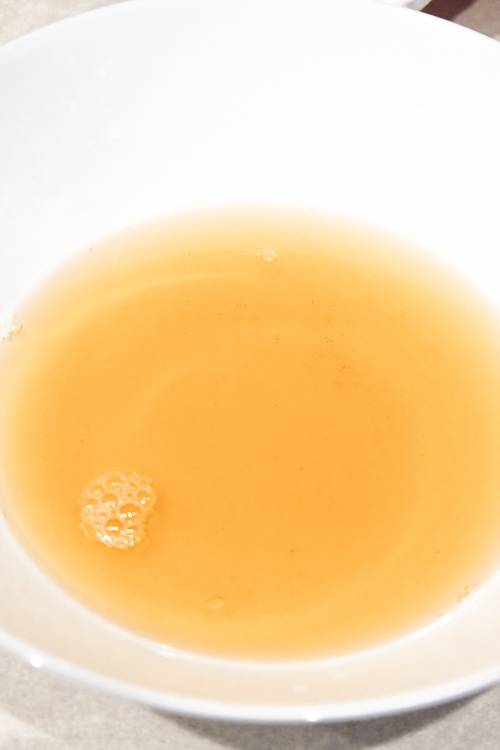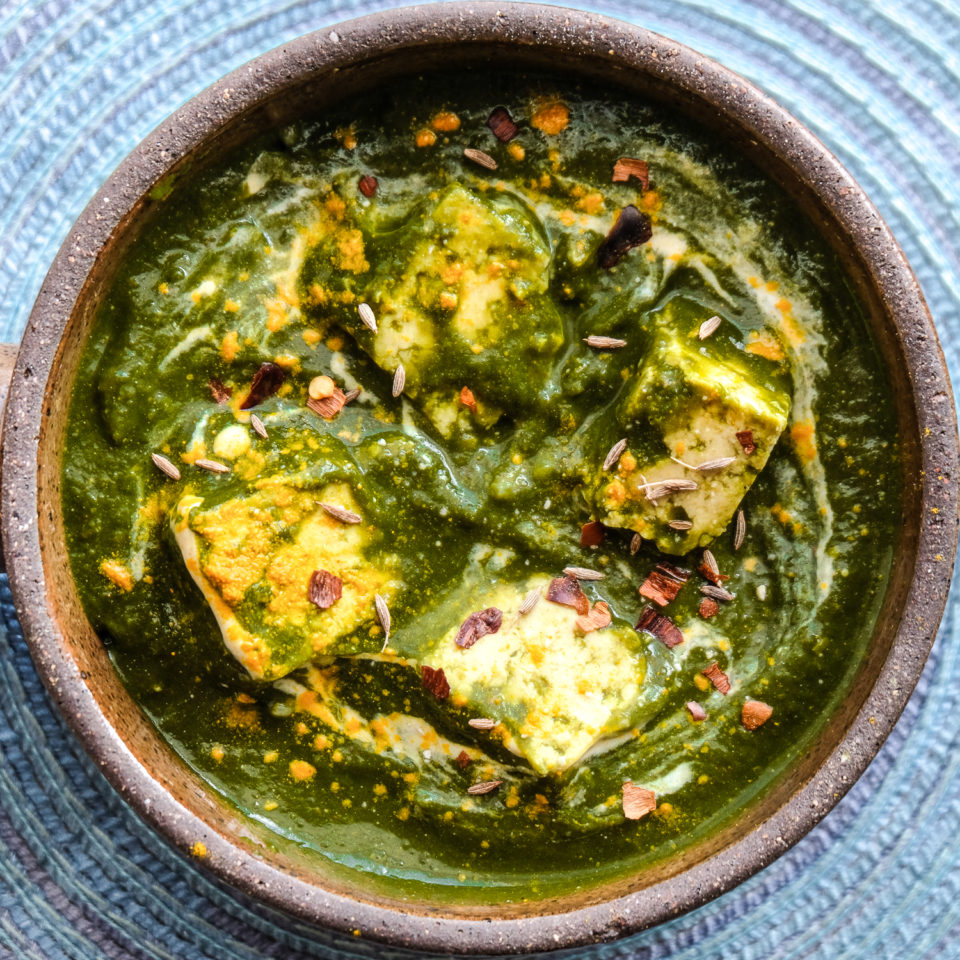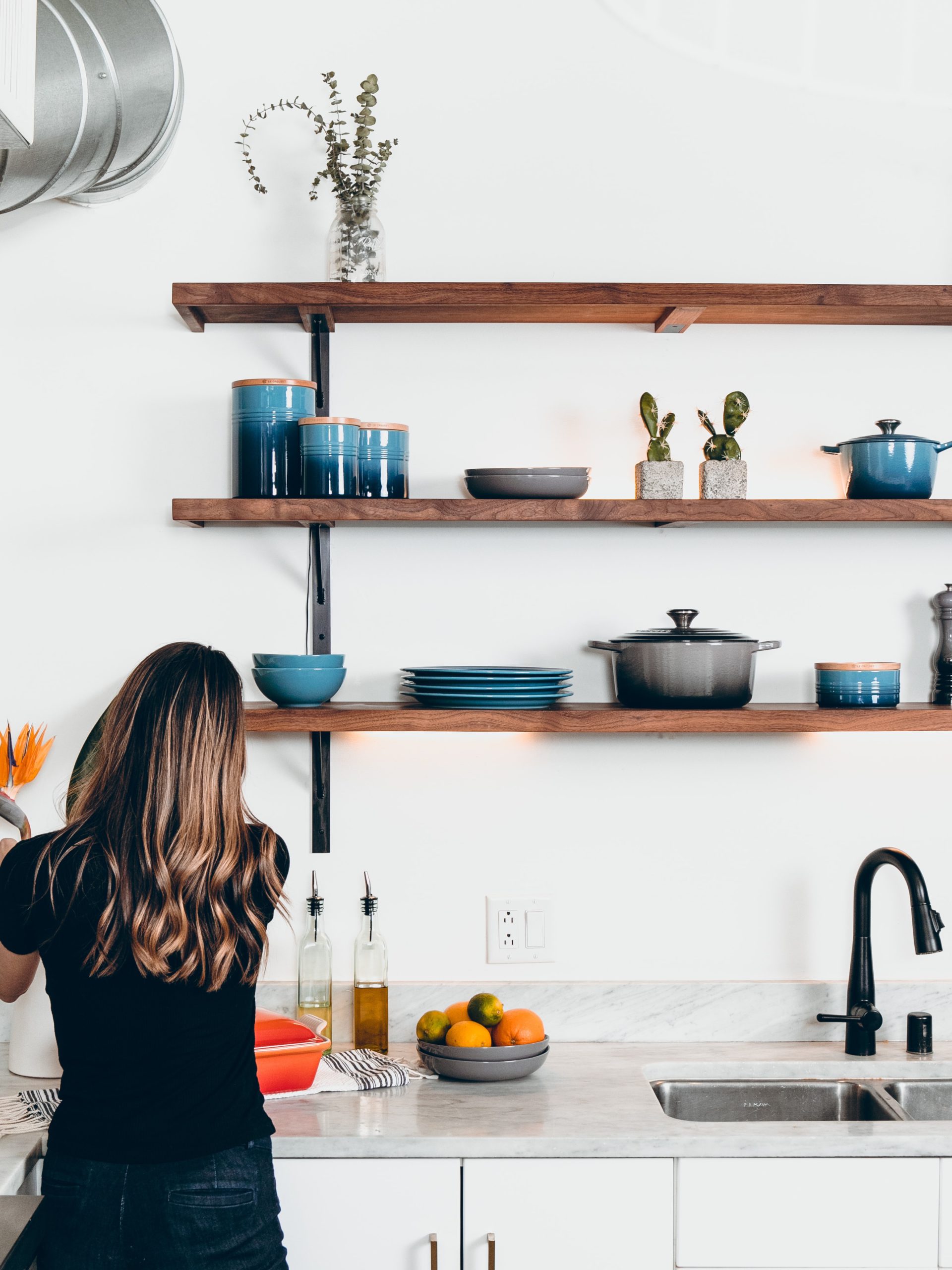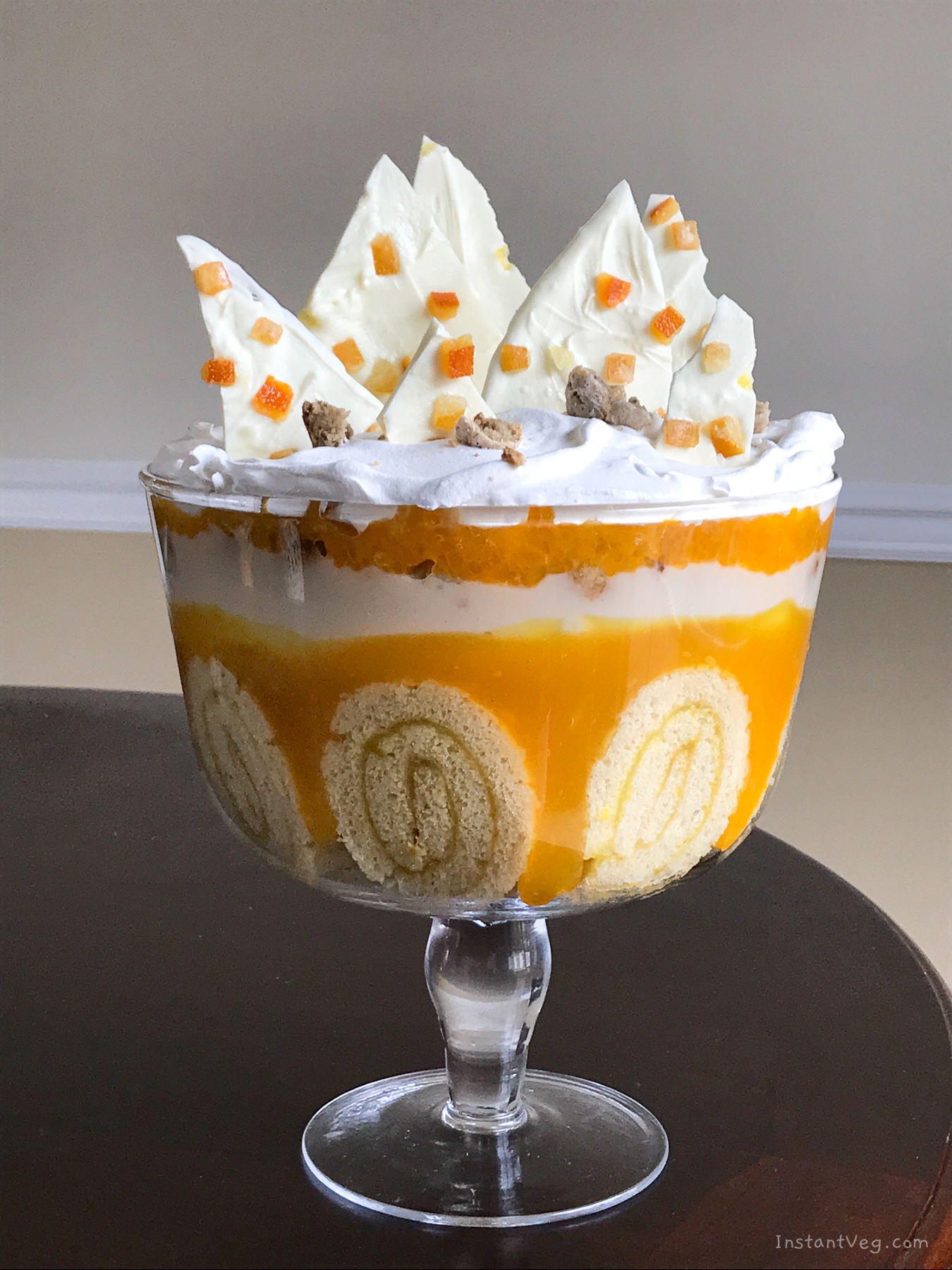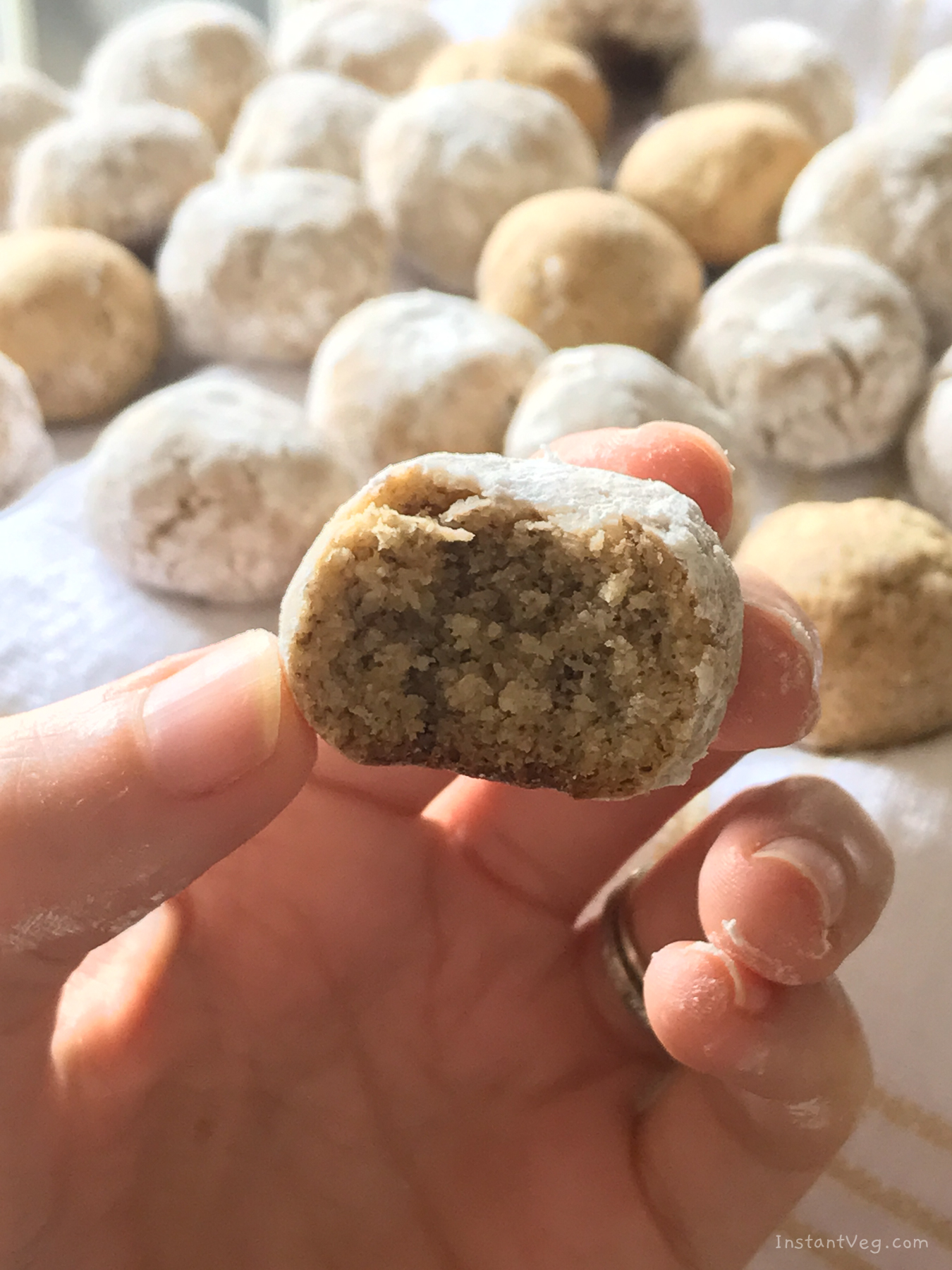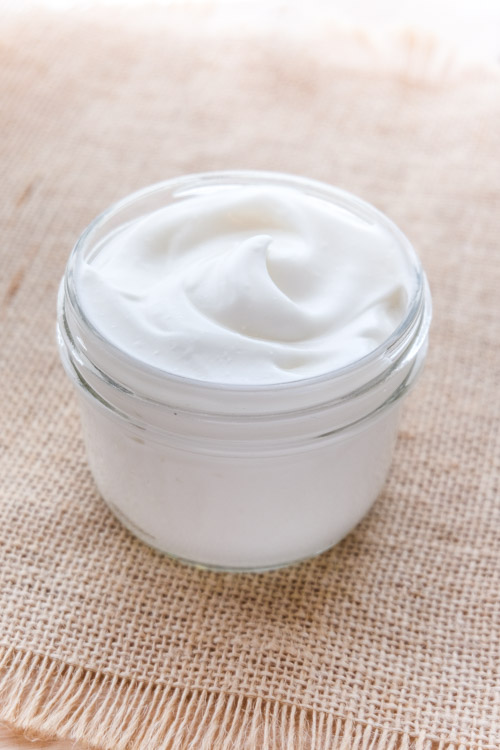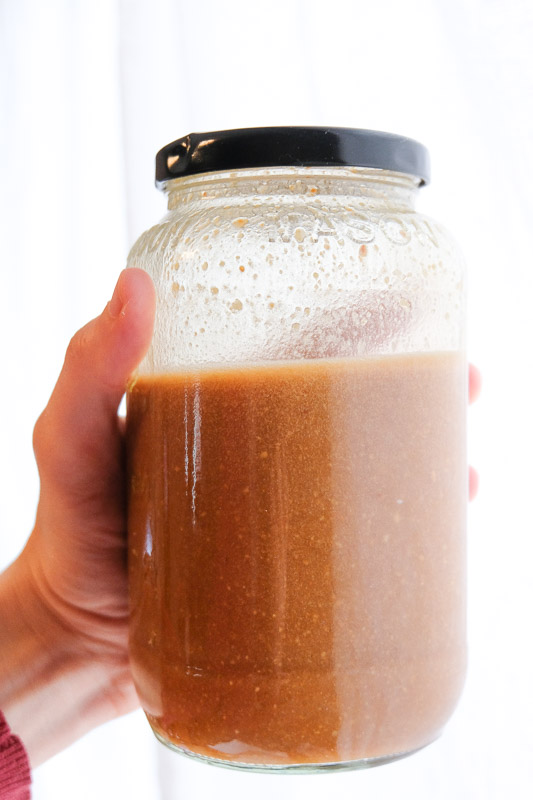Wondering how to make aquafaba at home so you don’t need to keep opening up your cans of chickpeas? In this post I’ll show you just how easy it is to make your own aquafaba, using an Instant Pot as well as a non-pressure-cooked version.
I use aquafaba in many of my vegan baking recipes. When I discovered how awesome it was as a substitute for egg whites, I kept wanting to try new ways to use it.
But a single can of chickpeas only contains enough aquafaba for 2-3 eggs, on average.
So I decided to see if I could make a big batch of aquafaba from scratch using dried pulses.
Turns out, making miracle bean water at home is easier than cake. Here’s how I do it:
Step 1: Choose Your Beans
You can use chickpeas, soy beans, black beans, great northern beans, pinto beans, and other similar types of beans to make aquafaba.

Smaller seeds like chia seeds don’t work for aquafaba, although they have some similar properties as a gelling agent. Stick with legumes!
I’m using ONE US CUP of dry soy beans in this recipe.
Step 2: Rinse & Sort Your Beans
Most dry beans (as well as rice and flour, for that matter) are considered “raw agricultural products” and shouldn’t be consumed without washing or cooking.
So be sure to rinse off your beans well and sort out any bad looking beans or other debris.
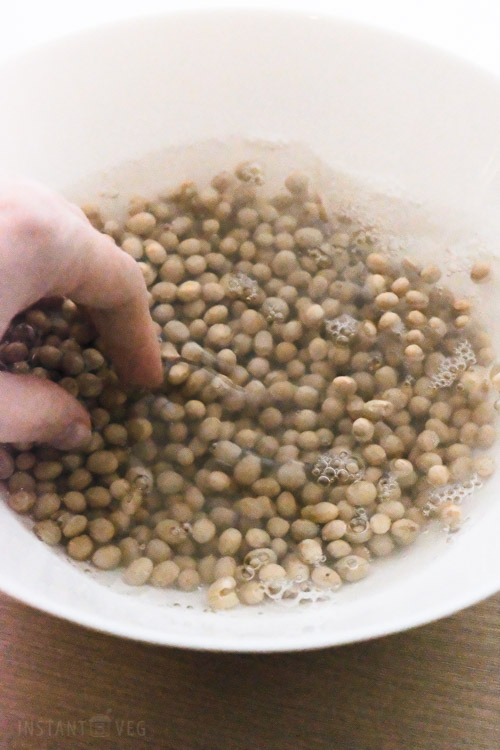
Step 3: Add Water To Beans
To my one cup of dry soy beans, I’m adding 3 cups of water.
Step 4: Pressure Cook Beans
I cooked my soy beans for 50 minutes on high pressure, with a quick release when they were done cooking.
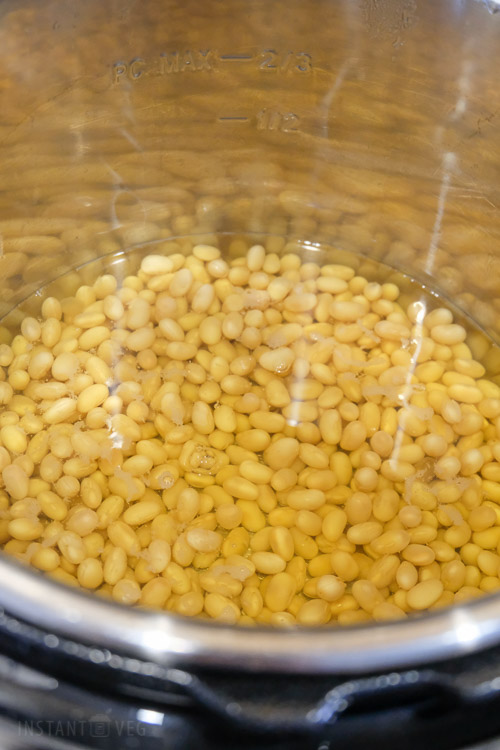
No pressure cooker? No problem.
If you don’t have a pressure cooker, let the beans soak for 8 hours in the fridge, then put them in a pot and bring them to boil for 5-10 minutes.
Step 5: Cool Beans
(Crap, I said it! As my kids like to remind me, hearing people say “cool beans” is one of my pet peeves. D’oh!)
Remove the inner pot from the Instant Pot and allow the beans and liquid to cool down until it’s warm enough to touch. This took about 30 minutes for me. I poured them into a bowl to speed up cooling. DO NOT RINSE OR DRAIN!
Once they have cooled down, cover the bowl and leave it in the fridge overnight or for about 8 hours. You *might* be able to use the liquid right away, but you will get a better quality aquafaba with more gelling power if you let it soak for longer!
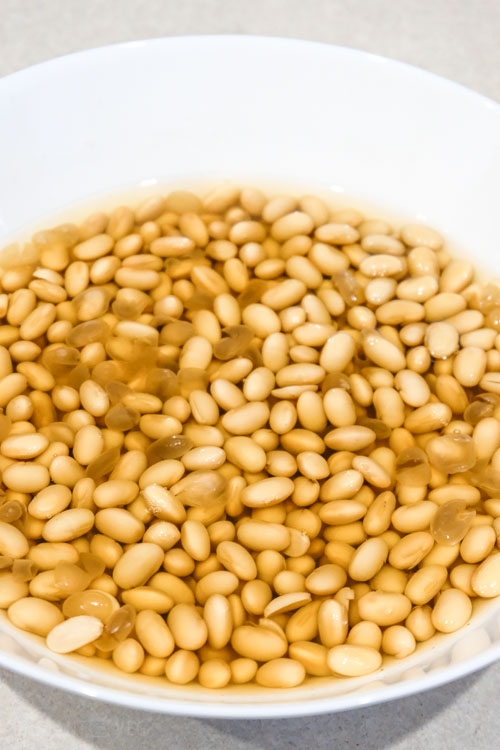
Step 6: Separate Beans & Liquid
Now your aquafaba is *almost* ready to use! It will be feeling slick and slippery. We just need to separate it from the beans.
Use a fine mesh strainer to separate the beans from the liquid. And now you’ve got tasty cooked soy beans and, ta-da! The liquid is your aquafaba.

Now you know how to make aquafaba!
You can put your cooked beans in soups, salads, vegan stir fry, or add them to smoothies for natural protein. You can even use them to make soy milk and tofu! I hope to have recipes up on those soon.
Store the cooked beans in the freezer until you are ready to eat them.
How Do I Use My Aquafaba?
Your aquafaba is ready to use right away. I usually use 4 Tbsp (or 1/4 cup) as one egg in my recipes.
You can add it straight to your baking mixes or, to add more fluffiness to your baked goods, whisk it up first until it’s foamy.

How Do I Store Aquafaba?
Aquafaba stores well in the freezer. I portion it into a silicone mini muffin pan. Each muffin cup holds 2 tablespoons, so I would then use 2 of the frozen chunks of aquafaba as one egg.
Once the aquafaba is frozen, I put all the pieces into a gallon-size freezer bag.
When I’m ready to use a frozen block of aquafaba, I just take it out of the bag and let it thaw at room temperature in a bowl. Or, if I’m impatient, I just microwave it for about 30 seconds until it’s thawed.
Then just add to recipes or whisk up as usual.
Conclusion: How To Make Aquafaba
I hope has been helpful in showing you how to make aquafaba at home – and just how simple it is.
You can save money (and waste less in terms of packaging) by making it yourself. And you can make a big batch of it!
